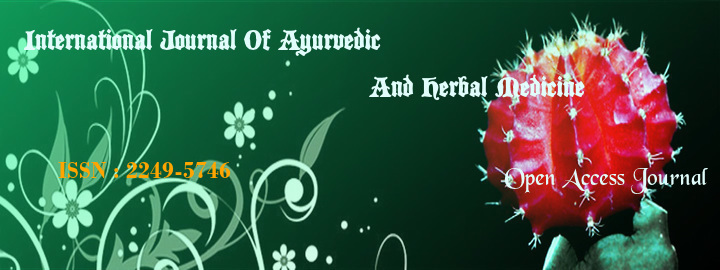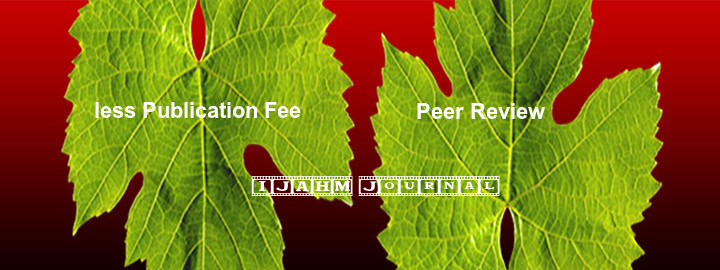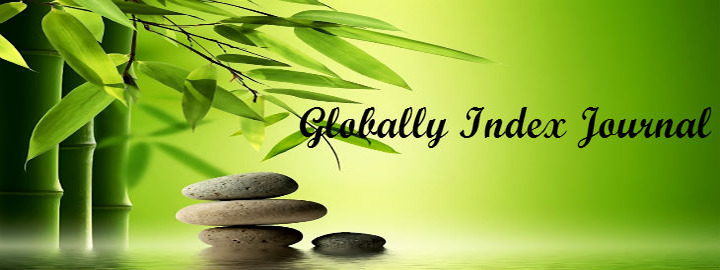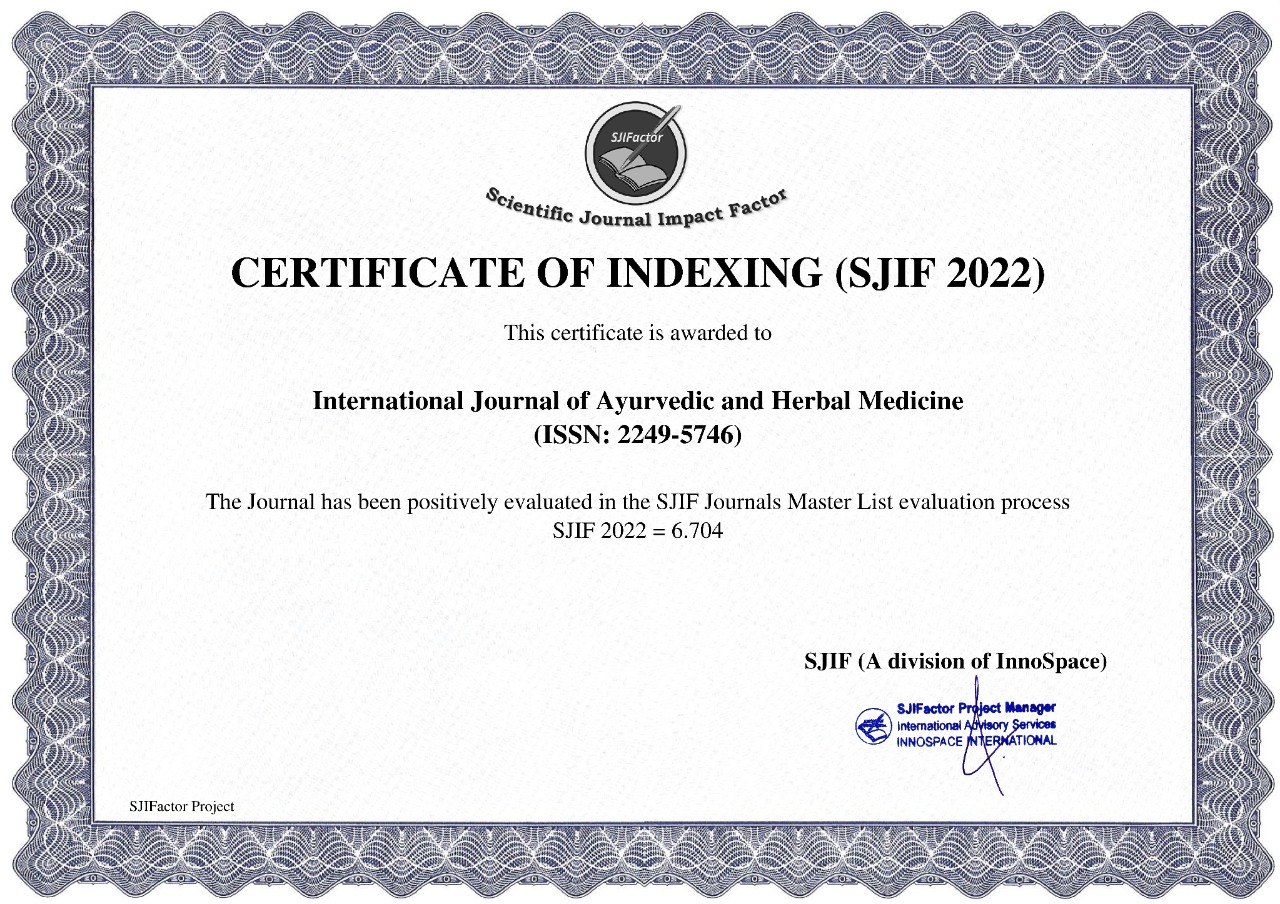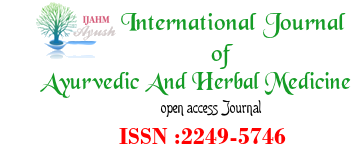


1Patnaik Sunita, 2Mishra D N
1Pratibha College, Pune Dist. (M.S.) 411019, India
2Sub-Centre, Swami Ramanand Teerth Marathwada University, Ausa Road, Peth, Latur (M.S.) 413531, India
1Email:This email address is being protected from spambots. You need JavaScript enabled to view it.
Abstract
The present paper intensively worked to recognize the correct botanical identities (most probable) of plants quoted only in Sanskrit names for the treatment of Yakrutudara, Kumbha-kāmalā, Halimak and Rakta-pitta Cikitsā (collectively grouped under Liver Cirrhosis stages) in the great Āyurvedic treatise, theCharaka-sam̟hita̅ also spelt as Caraka-sam̟hita̅.The botanical identification of medicinal plants mentioned in the Sanskrit texts is not unanimous because of differential interpretation of the synonyms and also for the scribal variations found in the multiple sources of the texts. The use of different plant species for the same plant drug recipe of the text by manufacturers and practitioners has limited confirmatory clinical outcomes. The coordinated attempt to study the Chapters of the texts with review of Sanskrit-botanical literature here, enlisted correct identities of 160 plant species belonging to 70 angiosperm families. The text has actually quoted a total of 195 Sanskrit named plants with the synonyms. It has been further found by a survey that 70 percent of these Sanskrit named plant parts are used by Āyurvedic practitioners to treat the patients identified with Liver-Cirrhosis symptoms. The present data will certainly aid the drug manufacturers and practitioners to use botanically correct plant species that could enhance the efficacy of the drugs.
REFERANCES
1. Sharma PV,“Caraka Samhita, Text with English Translation, Chaukhambha Orientalia”, Vol I to IV, Edn 9,Chaukhambha Sanskrit Series Office, Varanasi, 2014
2. PaliwalMurlidhar, Byadgi PS, “Charaka - The Great Legendary and Visionary of Ayurveda”, International Journal of Research in Ayurveda and Pharmacy 2011; Vol 2 (4)
3. DashVaidya Bhagwan & Kashyap Vaidya Lalitesh, “Materia Medica of Ayurveda - Based on Ayurveda Saukhyam of Todarananda”, Concept Publishing Company, New Delhi, 1980
4. Collier JD, Webster G, “Liver and Biliary Tract Disease”, Davidson’s Principles and Practice of Medicine, Chapter 23, Edn 21, Churchill Livingstone Elsevier Limited, Edinburgh, 2010, pg no 942
5. Mohan Harsh,“The Liver, Biliary Tract and Exocrine Pancreas”, Textbook of Pathology, Chapter 21, Edn 6, Jaypee Brothers Medical Publishers P Ltd, Chandigarh, 2010, pg no 630
6. Meulenbeld GJ, “A History of Indian Medical Literature”, Vol II, Egbert Forsten Groningen, The Netherlands, 2000
7. Anonymous, e-Nighantu, developed by NIIMH (National Institute of Indian Medical Heritage), Hyderabad for CCRAS (Central Council for Research in Ayurvedic Science), New Delhi, 2012
8. Bagde AB, Sawant RS, Sawai RV, Muley SK, Dhimdhime RS, “Charaka Samhita - A Complete Encyclopedia of Ayurvedic Science”, International Journal of Ayurveda and Alternative Medicine 2013; 1(1)
9. DebRoy Saumendu, Das Sumit, Dibyendushil Dutta, Kaushik N, “Herbal Hepatoprotective Agents: A Review”, World Journal of Pharmaceutical Research 2012;1(2), pg no 87-99
10. MishraDN, “Medicinal Plants for the Treatment of Fever (Jvaracikitsa) in the Madhavacikitsa Tradition of India”, Indian Journal of Traditional Knowledge 2009;8(3), pg no 352-361
11. Rao Linga M, Savithramma N, “Phytochemical screening of Dasamoola - An Ayurvedic Drug”, International Journal of Pharmacy and Pharmaceutical Sciences 2011; Vol3, Sup 5
12. Rungsung Wungsem, Dutta Sreya, Das Debajyoti, Hazra Jayram, “A Brief Review on the Botanical Aspects and Therapeutic Potentials of Important Indian Medicinal Plants”, International Journal of Herbal Medicine 2013; 1(3), pg no 38-45
13. Sabade Mahesh, “Ayurvedic Therapy for Hepatic Encephalopathy - A Case Report”, Topics in Integrative Health Care, an international journal 2014;5 (1)
14. SensarmaP, “Plant Names- Sanskrit and Latin”, Ancient Science of Life 1992; Vol7, pg no 201-220
15. Dutt Udoy Chand, “The Materia Medica of Hindus”, Thacker Spink & Co, Calcutta, 1977
16. Anonymous, Treatment Guideline for Ayurvedic Medicine, Office of the Director Homeo & Traditional Medicine and Line Director, AMC, Dhaka, 2006
17. DukeJames A, Godwin Mary Jo Bogenschutz, duCellier Judi, Duke Peggy Ann K, “Handbook of Medicinal Herbs”, 2nd Edition, CRC Press LLC, USA, 2002
18. KhareCP, “Indian Medicinal Plants - An Illustrated Dictionary”, Springer Science + Business Media, ILC, New York, USA, 2007
19. Sharma PC, Yelne MB, Dennis TJ, “Database of Medicinal Plants used in Ayurveda”, 2000, Vol I to VII, at vedicbooks.net
20. Anonymous, The Ayurvedic Pharmacopoeia ofIndia (API), Part I, Volume I to VI, Ministry of Health & Family Welfare, Government of India, New Delhi, 2008
21. Anonymous,The Ayurvedic Formulary of India (AFI), Part B - Formulary Of Single Drugs, Ministry of Health & Family Welfare, Government Of India New Delhi, 2000
index







